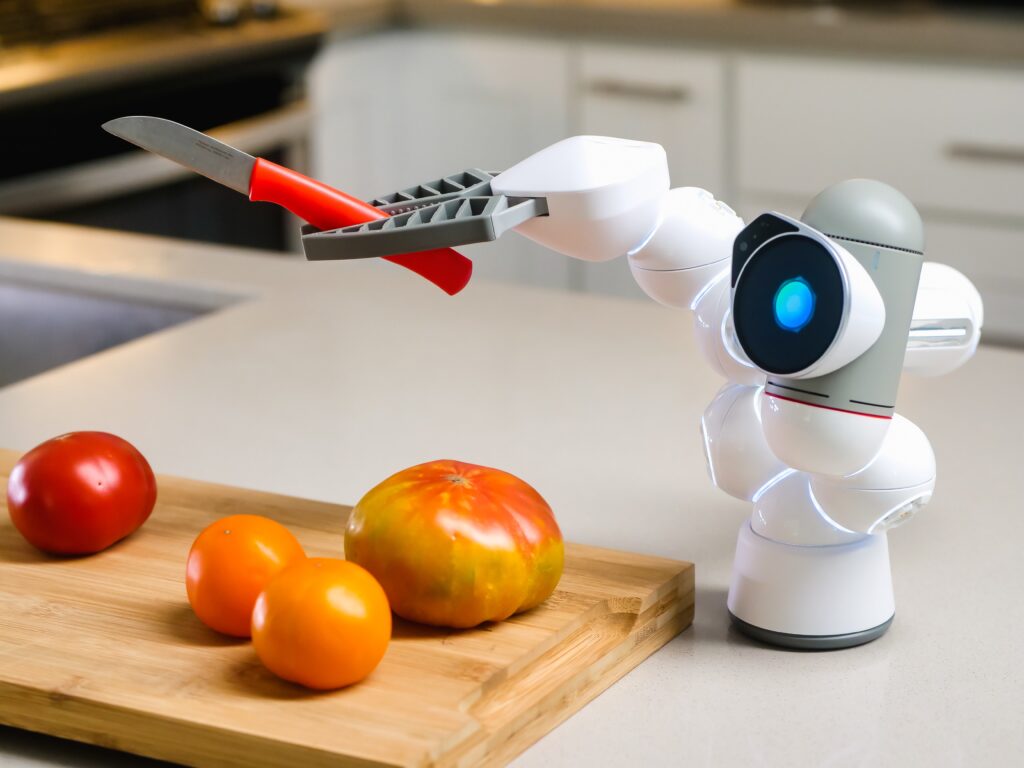To Share is to Show You Care!
In the fast-paced world of AI, achieving seamless integration and compatibility is crucial to unlock the full potential of artificial intelligence technologies. If you’ve been struggling with these issues, worry not! In this blog post, we will explore the best solutions to help you achieve AI harmony in 2023. Let’s dive in and turn your AI dreams into reality!
1. Understanding the Challenges
Before we delve into the solutions, let’s briefly understand the integration and compatibility challenges faced in the AI landscape.
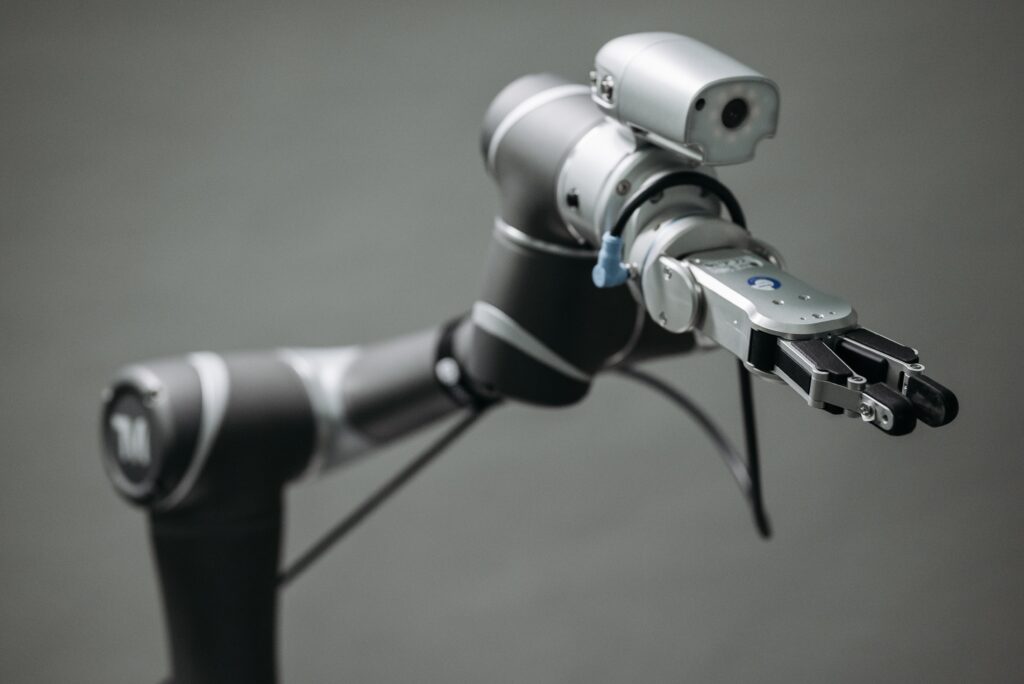
1.1 Diverse Data Sources
In the AI world, data is the fuel that drives algorithms. Diverse data sources refer to the fact that AI systems often need to process and analyze data from various origins, such as different databases, file formats, or data streams. The challenge here is that these data sources may have different structures, formats, and quality levels, making it challenging to integrate and work with them effectively.
1.2 Interoperability
Interoperability refers to the ability of different AI components or systems to work together seamlessly. In an AI ecosystem, you might have various tools, libraries, and services that need to communicate and share data.
The challenge is ensuring that these components can understand and exchange information effectively, without compatibility issues.
1.3 Scalability
Scalability is essential for AI systems that are expected to handle an increasing amount of data and tasks over time. As your AI infrastructure grows, you need to ensure it can handle this growth without a significant drop in performance.
The challenge lies in designing your AI architecture and infrastructure to accommodate this growth without compromising efficiency.
1.4 Legacy Systems
Legacy systems are older, often outdated, software or hardware components that a company may still rely on. Integrating AI with legacy systems can be challenging due to differences in technology, data formats, and communication protocols.
The challenge here is to find ways to make AI solutions work seamlessly with these older systems, as many organizations cannot completely replace them.
2. Now, let’s explore the best solutions to tackle these challenges:
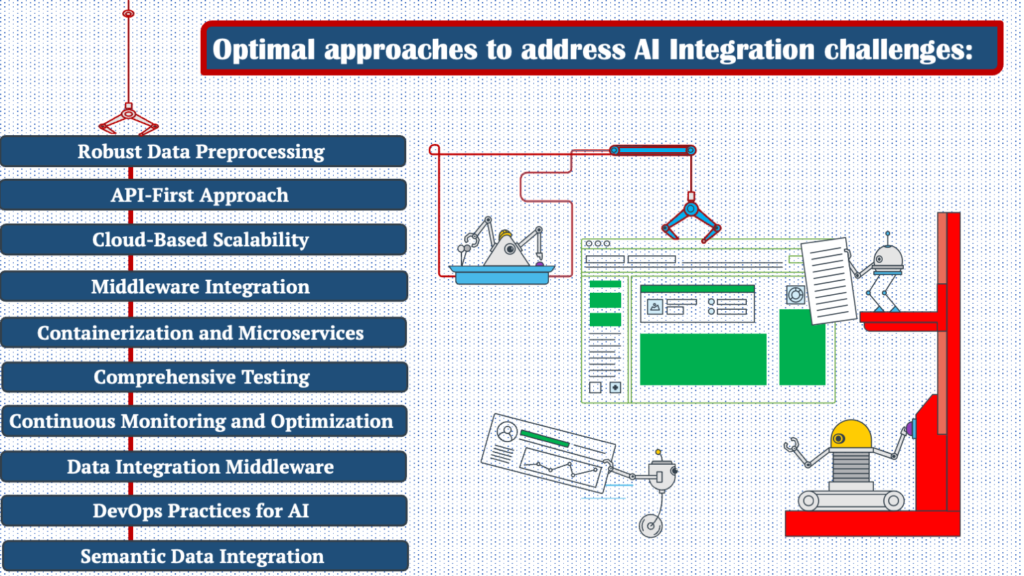
2.1 Robust Data Preprocessing

Utilize data preprocessing tools: Data preprocessing involves cleaning, transforming, and standardizing data before it’s used by AI algorithms. Utilize specialized tools and libraries like Pandas, NumPy, or TensorFlow Data Validation to automate these tasks.
Data validation techniques: Implement data validation techniques to ensure that the data you’re working with is of high quality. This includes checking for missing values, outliers, and inconsistencies, as well as verifying data integrity.2.2 . API-First Approach
API-first strategy: Adopting an API-first approach means designing your AI systems with APIs (Application Programming Interfaces) in mind from the beginning. APIs allow different components to communicate effectively. Ensure that your APIs are well-documented and follow best practices. Standardized APIs: Use widely accepted API standards like RESTful or GraphQL to ensure compatibility and ease of integration between different AI components or systems. This standardization simplifies communication between different parts of your AI ecosystem.

2.3 Cloud-Based Scalability

Leverage cloud platforms: Cloud providers like AWS, Azure, and Google Cloud offer scalable infrastructure and services tailored for AI. By hosting your AI solutions in the cloud, you can easily scale up or down based on your needs without the hassle of managing physical servers.
Services for AI: These cloud providers offer specialized services like AWS SageMaker, Azure Machine Learning, and Google AI Platform, which provide tools and resources for building and scaling AI models.
2.4 Middleware Integration
Middleware solutions: Middleware acts as an intermediary layer between AI systems and legacy systems. It can translate data formats, protocols, and interfaces, making it easier for modern AI technologies to communicate with older infrastructure.
Bridge the gap: Middleware bridges the technological gap between modern AI solutions and legacy systems, allowing them to work together seamlessly.

2.5 Containerization and Microservices

Containerization: Use technologies like Docker to containerize your AI applications. Containers encapsulate your code and dependencies, ensuring consistency between development and production environments. This makes deployment and scaling more manageable.
Microservices architecture: Break down your AI system into smaller, modular components called microservices. Each microservice handles a specific task or function, making it easier to manage and scale individual parts of your AI application independently.
2.6 Comprehensive Testing
Develop test suites: Create comprehensive test suites that cover various aspects of your AI integration and compatibility. This includes functional testing, performance testing, and integration testing.
Automated testing: Implement automated testing tools to continuously monitor and validate your AI systems. Automated tests can catch issues early in the development process, ensuring the reliability of your AI solutions.
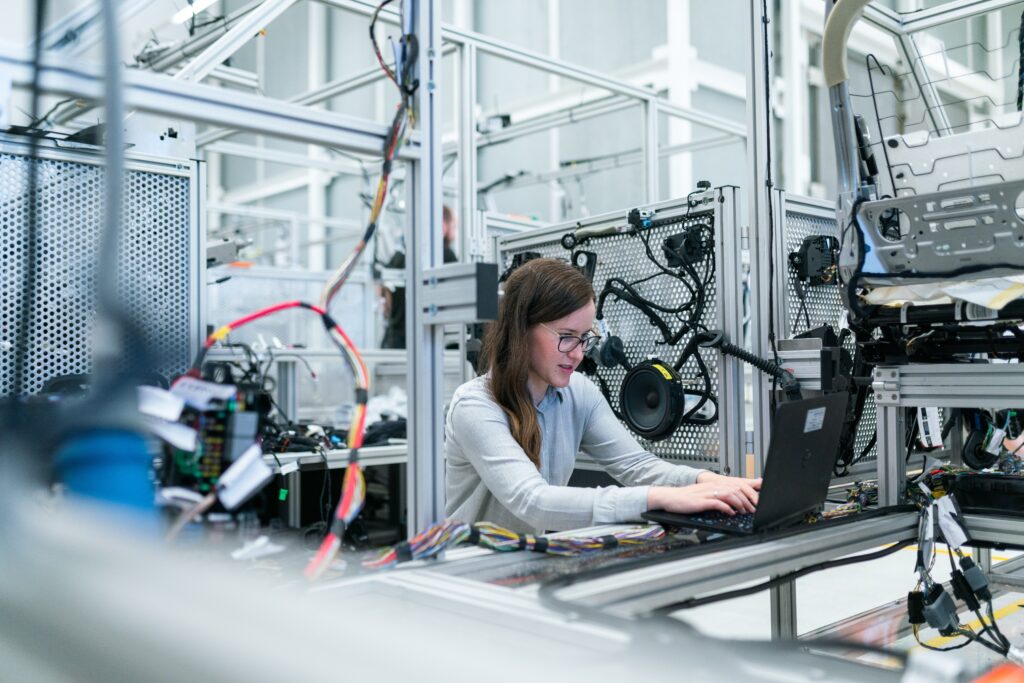
2.7 Continuous Monitoring and Optimization

Monitoring tools: Implement monitoring tools to track the performance of your AI systems in real-time. Tools like Prometheus, Grafana, or custom dashboards can help you identify bottlenecks, errors, or anomalies.
Continuous optimization: Continuously optimize your AI algorithms and infrastructure based on monitoring data. This may involve fine-tuning model parameters, adjusting resource allocation, or making architectural improvements to enhance efficiency and performance over time.
2.8 Data Integration Middleware
Middleware for data integration: Invest in data integration middleware solutions like Apache Kafka or Apache Nifi. These tools enable real-time data streaming and transformation, making it easier to integrate diverse data sources into your AI systems.
Data format conversion: Middleware can handle data format conversions on-the-fly, allowing you to ingest data from various sources and convert it into a standardized format that your AI algorithms can process.
Event-driven architecture: Implement an event-driven architecture using middleware to ensure that data updates from different sources trigger appropriate actions within your AI ecosystem. This approach enhances the responsiveness and real-time capabilities of your AI systems.

2.9 DevOps Practices for AI
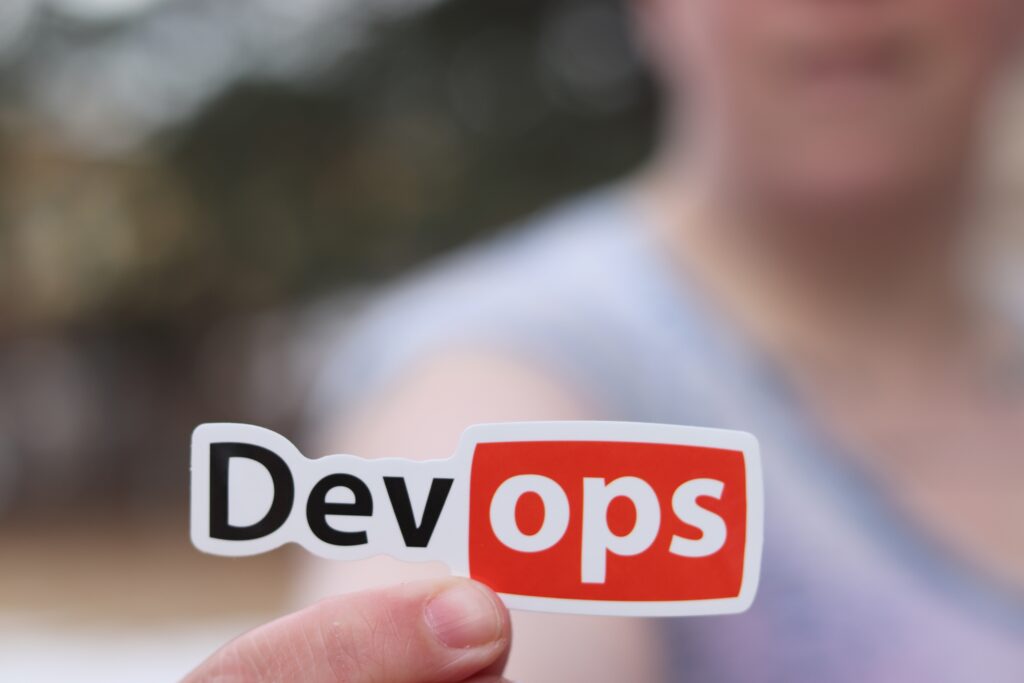
Adopt DevOps for AI: Implement DevOps practices specifically tailored for AI projects. This involves automating the deployment, testing, and monitoring of AI models and infrastructure.
Continuous Integration/Continuous Deployment (CI/CD): Set up CI/CD pipelines to automate the deployment of AI models and updates. This ensures that changes are thoroughly tested and seamlessly deployed into production environments.
Version Control: Use version control systems like Git to manage AI model versions and configurations. This helps maintain consistency and traceability in your AI development process, making it easier to track and resolve compatibility issues.
2.10 Semantic Data Integration
Semantic data models: Employ semantic data modeling techniques such as RDF (Resource Description Framework) to create a unified and semantically rich representation of your data. This approach adds context and meaning to the data, making it easier for AI systems to understand and process.
Ontologies and knowledge graphs: Develop ontologies and knowledge graphs to capture domain-specific knowledge and relationships within your data. These structured representations enable AI systems to make more intelligent decisions and facilitate data integration.
Semantic mapping: Use semantic mapping tools to align data from diverse sources with your semantic data model. This mapping process helps bridge the semantic gap between different datasets, improving integration and compatibility.

Conclusion
Achieving AI harmony in 2023 is within your reach. By following these best solutions for integration and compatibility issues, you can turn your AI dreams into reality. Remember, the key is to adapt, innovate, and stay updated with the ever-evolving AI landscape. Embrace these strategies, and watch your AI projects thrive! With these insights, you’re now well-equipped to navigate the world of AI integration and compatibility in 2023. Harness the power of artificial intelligence and make your dreams come true! 😃🚀
Frequently Asked Questions
Q1: How can we overcome the challenges of artificial intelligence?
A: Overcoming the challenges of artificial intelligence involves robust data preprocessing, utilizing APIs for interoperability, adopting cloud-based scalability, middleware integration, containerization, and microservices. Comprehensive testing, continuous monitoring, and optimization are also vital strategies for success.
Q2: What are the 4 main problems AI can solve?
A: AI can solve a wide range of problems, but four main categories include automation (repetitive tasks), data analysis (pattern recognition), decision-making (predictive analytics), and natural language understanding (chatbots, language translation).
Q3: How do you integrate artificial intelligence?
A: Integrating artificial intelligence involves designing AI systems with APIs, using standardized APIs like RESTful or GraphQL, adopting a containerized microservices architecture, and ensuring compatibility with legacy systems through middleware solutions.
Q4: Why does the integration of AI remain as a challenge for some companies?
A: Integration challenges can arise due to diverse data sources, lack of standardized APIs, difficulties with scalability, and the need to integrate with legacy systems. Additionally, a lack of expertise and resources can hinder successful AI integration.
Q5: What can be done to improve AI?
A: Improving AI requires ongoing research and development, data quality enhancement, algorithm optimization, ethical considerations, user feedback, and continuous monitoring and fine-tuning of AI models and systems.
Q6: What are the 5 components of problem-solving AI?
A: The five components of problem-solving AI typically include data collection, data preprocessing, model selection and training, evaluation and validation, and deployment and monitoring.
Q7: What is the most common problem in AI?
A: One common problem in AI is overfitting, where a model performs exceptionally well on training data but poorly on unseen data. This issue can be addressed through techniques like regularization and cross-validation.
Q8: What are the three problems of artificial intelligence?
A: The three fundamental problems in artificial intelligence are perception (understanding and interpreting data), reasoning (making decisions based on data and knowledge), and learning (improving performance through experience).
Q9: What is integration in intelligence?
A: Integration in intelligence refers to the ability of different intelligence components or systems to work together seamlessly, share information, and collaborate to achieve common goals.
Q10: What are the benefits of AI integration?
A: AI integration offers benefits such as improved decision-making, automation of tasks, enhanced customer experiences, cost savings, and the ability to extract valuable insights from data.
Q11: What is AI in data integration?
A: AI in data integration involves using artificial intelligence techniques to streamline and automate the process of integrating data from various sources, improving data quality, and facilitating data transformation.
Q12: What are the challenges that AI is facing today?
A: Some challenges AI faces today include ethical concerns, bias in algorithms, data privacy issues, the need for large amounts of high-quality data, and the rapid pace of technological advancements.
Q13: What is the biggest disadvantage of integrating artificial intelligence in the manufacturing industry?
A: The biggest disadvantage of integrating artificial intelligence in the manufacturing industry can be the initial cost of implementation, which includes acquiring AI technology, training staff, and potential job displacement.
Q13: What are the three domains of artificial intelligence?
A: The three domains of artificial intelligence are narrow AI (focused on specific tasks), general AI (human-level intelligence), and superintelligent AI (exceeding human intelligence). Currently, we primarily deal with narrow AI.
The Informed Minds
I'm Vijay Kumar, a consultant with 20+ years of experience specializing in Home, Lifestyle, and Technology. From DIY and Home Improvement to Interior Design and Personal Finance, I've worked with diverse clients, offering tailored solutions to their needs. Through this blog, I share my expertise, providing valuable insights and practical advice for free. Together, let's make our homes better and embrace the latest in lifestyle and technology for a brighter future.

